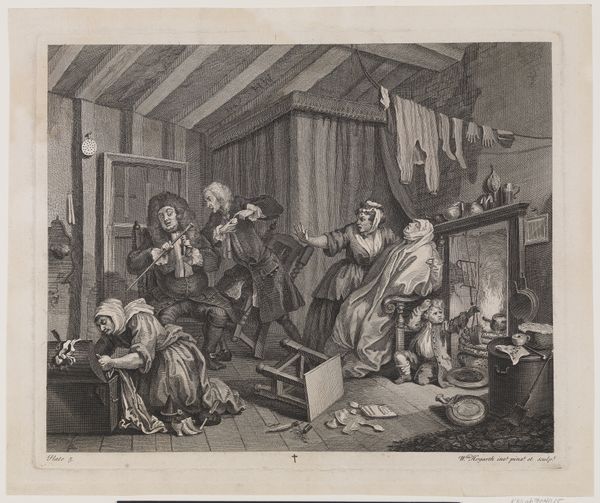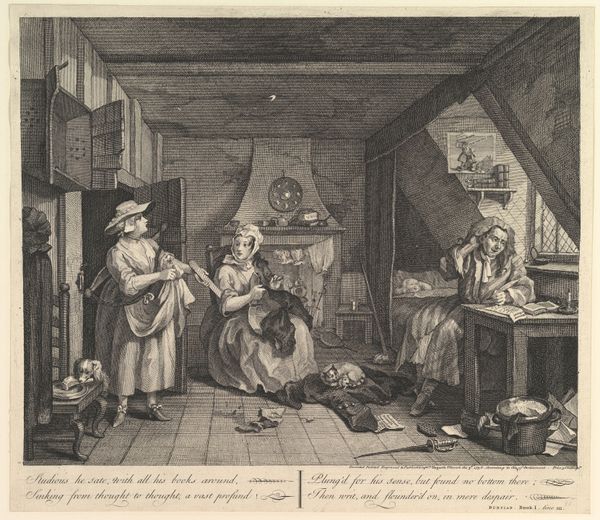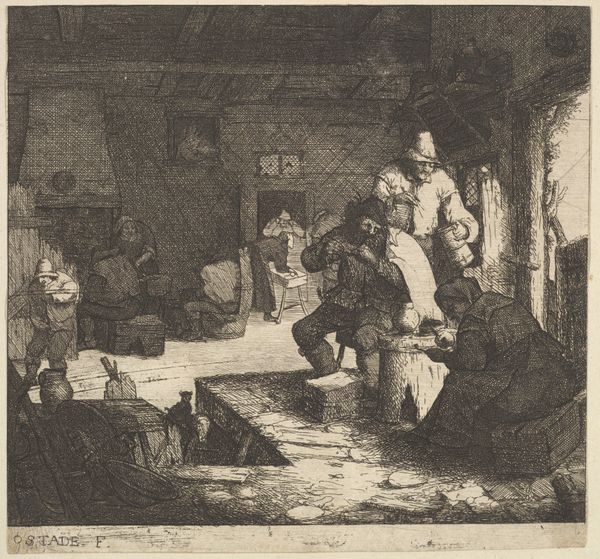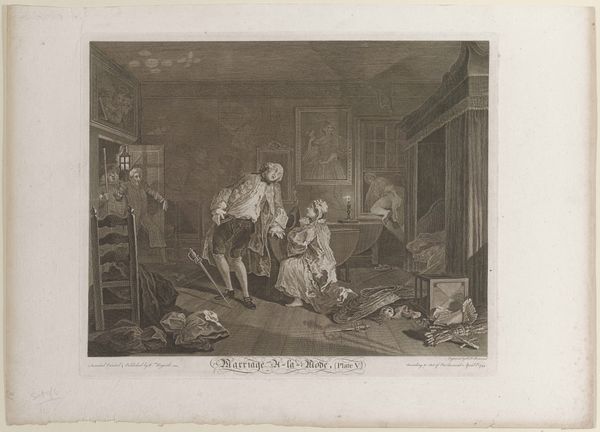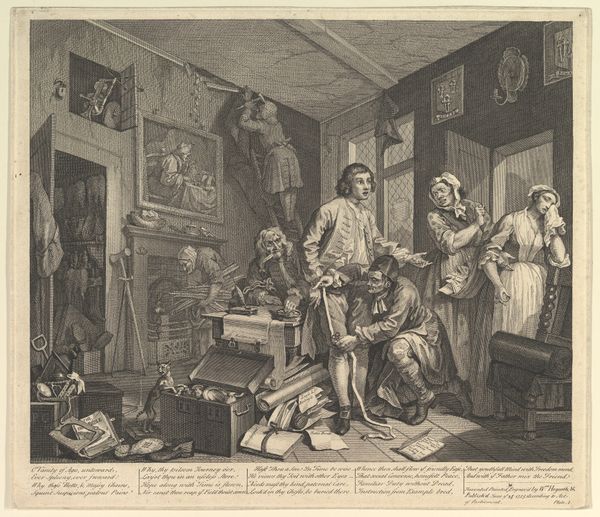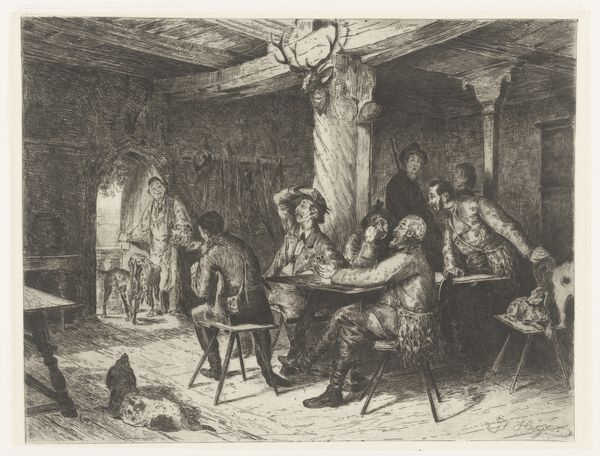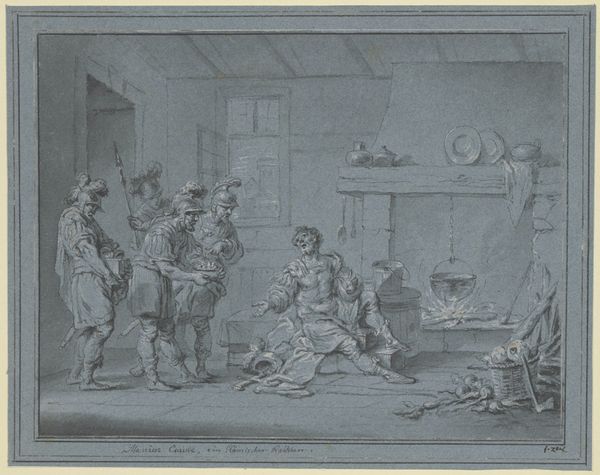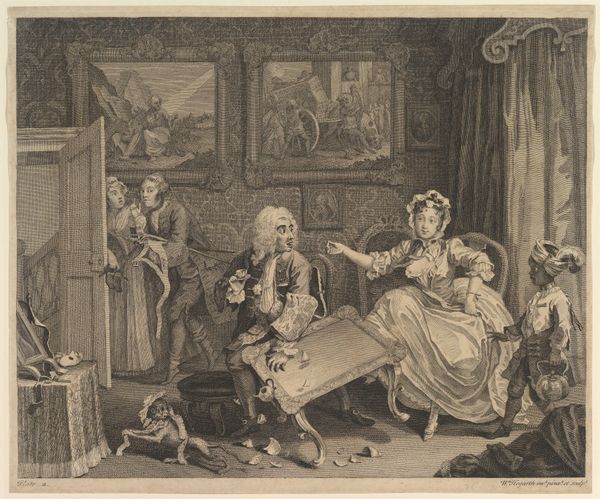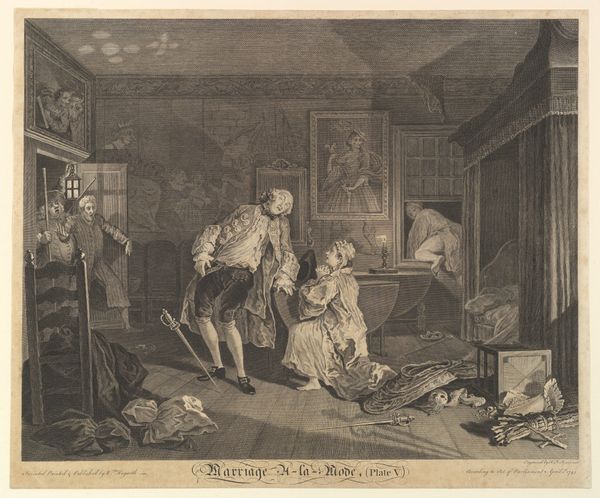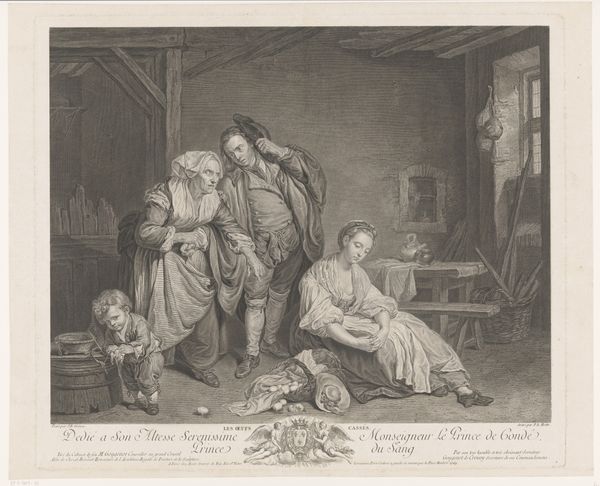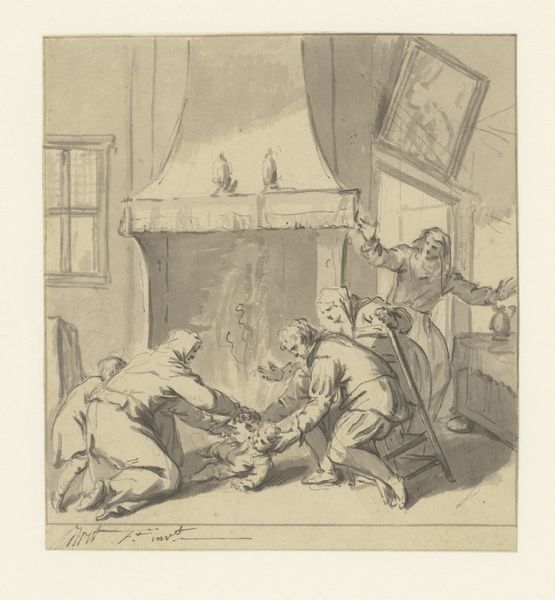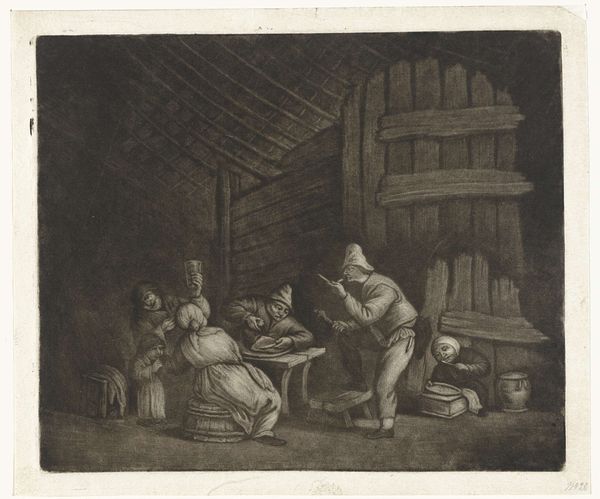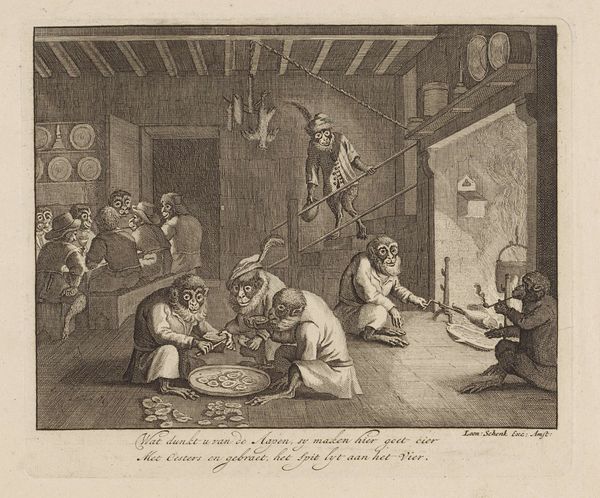
drawing, print, etching, engraving
#
drawing
#
narrative-art
#
baroque
# print
#
etching
#
caricature
#
child
#
men
#
portrait drawing
#
genre-painting
#
history-painting
#
engraving
Dimensions: sheet: 12 1/2 x 15 1/4 in. (31.7 x 38.8 cm)
Copyright: Public Domain
Curator: Welcome. We're looking at William Hogarth’s "A Harlot’s Progress, Plate 5," an etching and engraving dating back to 1732. Editor: Immediately striking. It’s incredibly dense, visually—chaotic, even. The light is almost oppressively bright, revealing the disarray of the scene. Is that a sense of impending… doom, perhaps? Curator: The print belongs to a series that follows the life of a young woman named Mary, charting her trajectory from innocence to prostitution and eventual demise. Hogarth was interested in creating a visual narrative, accessible to a wide audience. Here, we witness the harlot’s death. Editor: So, it is doom. And observe the social commentary embedded within this scene. The purported medical professionals, seemingly more concerned with their instruments and payment than with the dying woman. There's a stark critique of class and the commodification of care during the era. Curator: Hogarth’s mastery lies in his ability to render texture through meticulous lines. Notice the rendering of fabrics – from the bed curtains to the harlot's garments—or the sharp contrast between light and shadow to highlight the contours of forms. There's a beautiful use of varied hatching and cross-hatching. Editor: Indeed, and beyond the formal elements, let’s unpack the symbolic weight of the setting. The dishevelled room speaks volumes about the harlot’s reduced state. Consider also the characters that inhabit it. Are those her offspring, neglected and desperate, by her deathbed? What comment is Hogarth making about the cyclical nature of poverty and societal neglect of these individuals? Curator: One could analyse the narrative and formal composition in terms of pictorial depth and perspective, particularly noting the strategic placement of figures to guide the eye and create dramatic focus... Editor: A fascinating consideration that enriches our appreciation for the art of printmaking as a vital form of communication at the time. And of Hogarth’s capacity to layer complexity in accessible images, forcing a kind of uncomfortable awareness. Curator: Absolutely, a true virtuoso of his craft! Editor: A powerful and haunting work, brimming with intricate details and urgent insights on marginalisation, precarity, and their complex consequences.
Comments
No comments
Be the first to comment and join the conversation on the ultimate creative platform.
